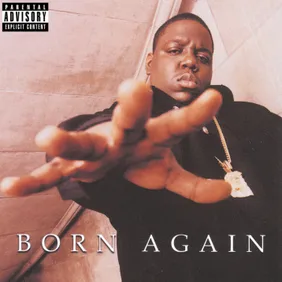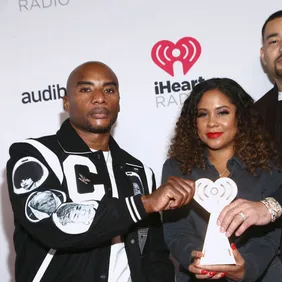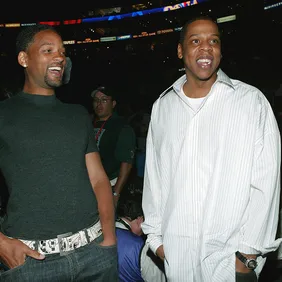Trap is a curious genre. It defies conventional wisdom to incorporate newfangled production techniques and bizarrely varied lyricism to create a sound that initially may feel generic or straightforward. Some critics have written it off as nothing more than a forgettable phase, cramming the mumbling auto-tune and Atlanta-born 808s into one corner in the hopes that it will all become more tolerable at a later date once the genre’s contemporaries have arrived at the solemn gates of expiration. Yet, in buying into preconceived notions, these critics mistakenly discard some of the most artistically unique acts in hip hop. One such artist is Future, the “sensational” trendsetter who irretrievably shaped the direction of trap music. In 2012, the Actavis astronaut rocketed to Pluto on what seemed like a triumphant arc toward long term success. His uncanny knack for warbled, singsong hooks transformed him into a commercial mainstay. With tracks like “Same Damn Time” and “Turn On The Lights,” he had found his niche, and was well on his way to becoming one of rap’s elite.
But somewhere along the way, his flightpath was altered. Honest, his much-maligned sophomore effort, received a notoriously lukewarm reception. The semblance of pop overtures made it a target for backlash, with many chastising Future’s half-hearted courting of crossover appeal. As his reputation plummeted, so too did his once cordial relationship with now ex-fiance Ciara. With the public eye firmly set on his apparent demise, Future was lost. He was an artist at a crossroads, being pulled in multiple artistic directions that seemed incapable of coalescing. His styrofoam double cup love had run dry, and hip hop seemed content to move on without him.
Yet something remarkable happened. Perhaps it was simply fueled by his disgust for public scrutiny, or maybe the torture of heartbreak and loss finally pushed him over the edge. Whatever the reason, a switch was flipped. From 2014 to 2015, Future came roaring back to life with a trifecta of mixtapes that redefined his omnipresence in hip hop. He calmly reset his course, rebuilt from the ground up, and catapulted his career to even greater heights through consistent productivity and a work ethic that was unparalleled. Nowhere was his exceptional run more visible then on Monster, the first of three projects that he produced as part of his enviable return to prominence. Released just days before Halloween in 2014, the mixtape was career-resuscitating. Future mercifully sacrificed the pop star within him in favor of unleashing his monster persona. He unceremoniously cast off the mantle bestowed upon him by the radio singles of the past, choosing to wrap himself in the prickly nihilism of someone who could care less if the world went up in flames. The watershed mixtape offered a vision of trap music unlike anything else the genre had seen before. His swelling fanbase, the Future Hive, buzzed to life, championing the trap renegade’s newfound direction. Monster’s nuanced and vulnerable narrative allowed Future to rekindle his strengths and make clear his intentions going forward. He had risen anew.
And while the zombified Future on the cover art is representative of his revival, the tape is laced with a perplexing humility. Deep inside the monster was a man pining for a different existence, looking to break free from the fear of weakness and instability. He was a wounded animal, trap music’s incarnation of unabashed hedonism and blasphemous inebriation. Future is at his best when he’s unhinged and spiraling out of control, when he allows his boundless hubris and raw emotion to the take the wheel. It all felt like the culmination of a month long bender, and the unequivocal climax was “Codeine Crazy.”
With the slosh of dirty sprite serving as his muse, Future embarks on a journey of despair and addiction that ultimately comes full circle with him rapping about the “bubbly.” It’s the tale of an addict attempting to cover up and distract himself from the suffering with sex, money, and alcohol. He tries to control it by any available means, but it inevitably ends up controlling him (“I’m an addict and I can’t even hide it”). His habits have potentially fatal effects, and he knows it (“Drowning in Actavis suicide”). It’s to the point that he’d rather lose his life than renounce his drug consumption, which speaks to just how dependent he has become (“Fuck the fame I’m sipping lean when I’m driving”). Future isn’t trying to be a role model; he’s an addict who’s out of options. The codeine is both a gift and a curse: it’s the source of his creativity, and also the reaper that is gradually enticing him closer and closer to death. There is a surprising focus to “Codeine Crazy” that is notably absent in other thematically titled tracks such as “Easter Pink” and “Dirty Sprite.” Future’s memory is razor sharp, and through it all he remains astonishingly coherent. Never has he been so emotionally transparent (“Drying my eyes believe it or not/I could never see a tear falling’”). The opening line of his third verse (“You thought I forgot about us?”) hits like a ton of bricks; despite all of the drugs and distractions, he can’t escape the heartache.
And yet, his impassioned blend of anger and sorrow is difficult to grasp. He walks the line between hero and villain, embracing the disconnect between what is being said and what he actually means (“I just took a bitch to eat at Chipotle/Spent another 60 thousand on a Rollie”). His presentation is so compelling and forthright that one can’t help but be ensnared by the lucid dreamscape that he weaves. Beneath all the bravado and diamond encrusted jewelry is a tortured man who is lost and hurting (“Like a loaded chopper I’m ’bout to shoot it/I’m so fucking sick and tired of these rumors”). Even his characteristic boasts fall flat amidst the pain, while his attempts at bolstering himself turn confessional (“Don’t tell me you celibate to the mula”). It’s a track that so badly wants to be a redemption story, a scathing dismissal of his past love. Instead, it’s a purple-tinged purgatory.
“Codeine Crazy” is a telltale sign of the times. Songs like “Move That Dope” feel dated in the sense that artists have progressed from rapping about moving drugs to using drugs. Youth culture has embraced the drug movement, while the syrupy raps that have long been synonymous with southern hip hop continue to drive the music emerging from the region. Future remains at the forefront; his cold and calculated approach is immersed in hard truths about drug addiction and the resolve to bounce back. “Codeine Crazy” not only serves as the outro to Monster, but also as a coup de grace. It’s a masterful song: the impeccable, swirling production from TM88, paired with Future’s heartache, guilt, and addiction conjure forth a hazy collage of images drowned in icy purple depths. Voyeuristic, potent, and increasingly darker, it’s the embodiment of Future’s glaring warning to others of the destructive effects of purple drink, his sincere plea to refrain from the reckless lifestyle that is tearing him apart. He’s on the brink of a colossal meltdown but somehow manages to stitch together his psyche with a clarity that is befuddling. Real life horrors, though not necessarily the violent kind one might expect, are brought to life through irrefutable honesty, while his lyrics are left to soak in a pool of codeine. “Codeine Crazy” is peak trap, a haunting translation of a low point in Future’s life that renders a truthful depiction of the rapper in all his drugged up glory.







